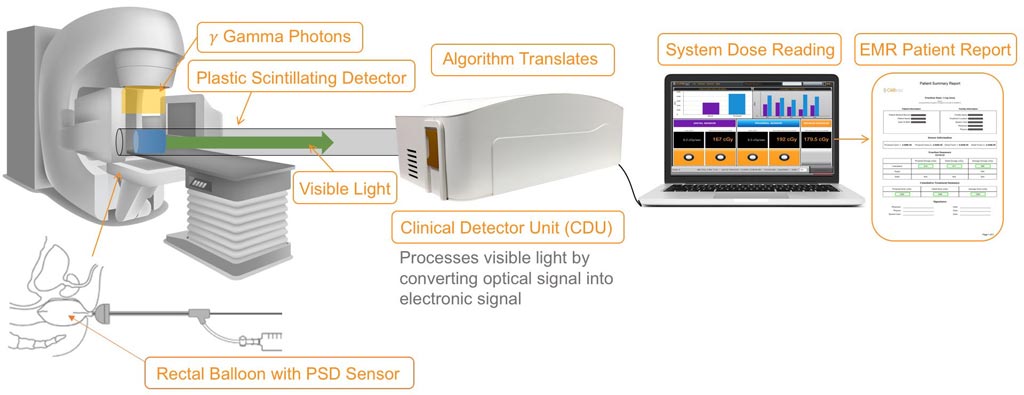Optical Scintillation Detector Monitors Radiation Treatments
By MedImaging International staff writers
Posted on 15 Nov 2017
A new system provides diagnostic pinpoint accuracy measurement of the radiation treatment plan by verifying the dose delivered is consistent with the prescribed dose.Posted on 15 Nov 2017
The RadiaDyne (Houston, TX, USA) OARtrac system is a real-time in vivo dosimetry device system that uses disposable scintillating detectors during stereotactic body radiotherapy (SBRT) and intensity-modulated radiation therapy (IMRT) for prostate cancer treatment or brachytherapy. The system is based on plastic scintillation detector (PSD) probes connected to a duplex fiber-optical cable that transmits the PSD signals to a charge coupled device (CCD) camera that measures the scintillator output signal.

Image: An optical system measures and validates radiation doses (Photo courtesy of RadiaDyne).
The optical measurement is converted to an electrical signal and displayed on a digital readout located in the control room of the linear accelerator treatment machine. Based on the continuous review of the accumulative dose data provided by the system, radiation oncologists can adjust subsequent treatment if and when required, thus allowing for a true adaptive radiation therapy protocol. The PSD sensor cable can be used up to five times on the same patient.
“Radiation oncologists can now monitor multiple radiation delivery modalities within the same treatment center, as well as reduce overall treatment costs related to routine patient dose monitoring,” said John Isham, founder of RadiaDyne.
Organs at risk (OAR) are defined as normal tissues whose radiation sensitivity may significantly influence treatment planning and/or the prescribed radiation dose.
Related Links:
RadiaDyne














